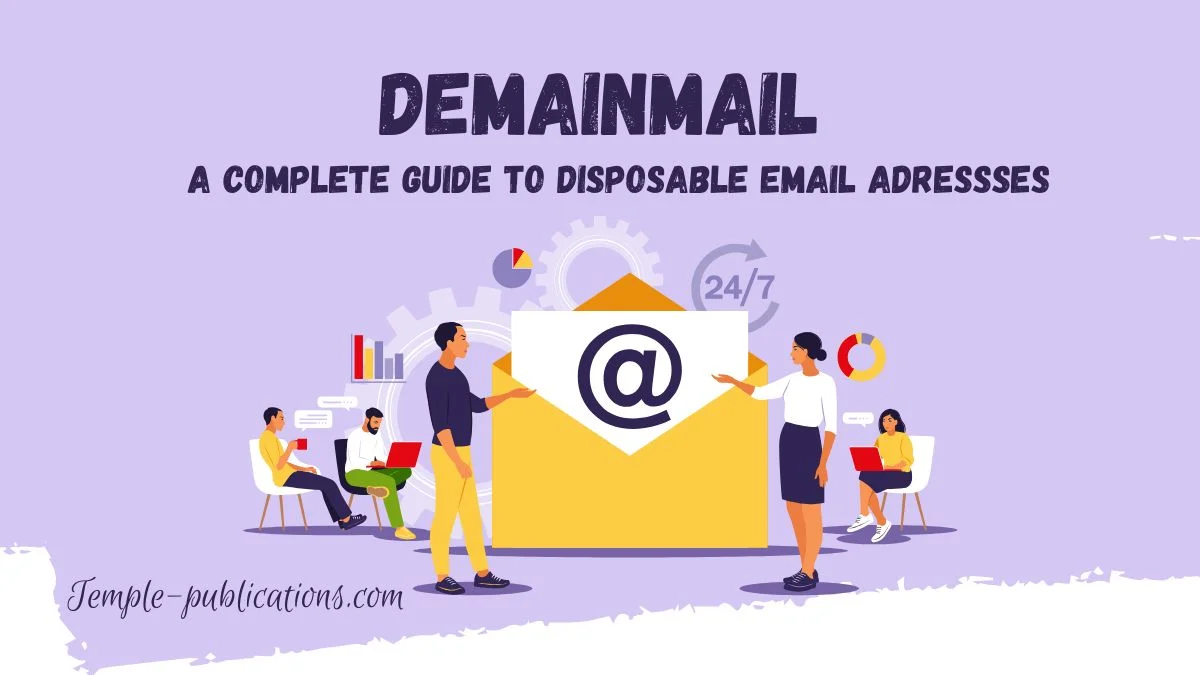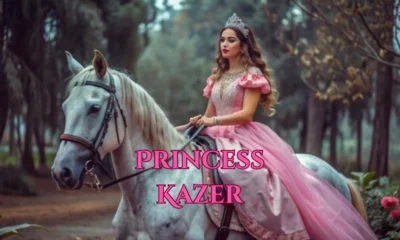GENERAL
What is Demainmail: A Complete Guide to Disposable Email Addresses

Your emails are not yours as you presume. Each announcement, newsletter, subscription, and download requires your email address, it appears, but once you give it to them, the avalanche of spam starts. In the era of ubiquitous digital advertising, security breaches, and privacy concerns, an email address may turn into the doorway to unlimited frustration.
What then is the solution? There is Demainmail, a free and temporary email that will allow you to get instant and completely anonymous access to an inbox that will disappear after you finish with it.
What Is Demainmail?
Demainmail is a temporary email service that allows users to generate throwaway email addresses for short-term use. These addresses require no registration and disappear after a limited period—perfect for signing up for services, downloading files, or verifying accounts without risking your personal inbox. Think of it as a digital cloak that lets you move through the web without leaving a trail of personal data behind.
Whether you’re dodging spam, testing websites, or avoiding intrusive tracking, Demainmail offers a lightweight, one-click solution for everyday privacy protection online.
The Vision Behind Demainmail’s Creation
Demainmail was founded and created to accomplish one of its missions, that is, to safeguard digital identities in a more intrusive online world. The spam bot, the data broker, and the aggressive marketing campaign all became commonplace in the 2000s, and users wanted a tool that could keep their inbox safe but that was still easy to use.
Rather than scaling up an email service to any number of features and login credentials, Demainmail creators shaved away the excess until all that was left was speed, ease of use, and privacy. They not only aim to prevent spam, but also to regain control over their digital imprint for people.
Core Features of Demainmail
Demainmail is packed with simple yet powerful functionalities that make it an essential tool for digital privacy:
- No Sign-Up Required: Generate and use an email address instantly—no account needed.
- Auto-Deleting Inboxes: Emails self-destruct after a set period (usually within an hour).
- Real-Time Inbox Access: View incoming emails without delay through a web-based interface.
- Multiple Domain Support: Choose from several email domains to bypass blocklists.
- Minimal Interface: Fast-loading and user-friendly with zero distractions.
These features combine convenience with security, making Demainmail one of the most efficient throwaway email platforms available today.
Benefits of Using Demainmail
Using Demainmail comes with several key advantages:
- Instant Privacy Protection: Keeps your real email hidden during risky or unnecessary interactions.
- Spam Reduction: Prevents your primary inbox from being cluttered with ads and irrelevant emails.
- Safe Testing: Useful for developers, testers, and QA professionals working with form submissions or trial accounts.
- No Strings Attached: Great for one-time downloads, giveaways, or accessing gated content without long-term commitment.
For anyone tired of unsolicited emails or concerned about email-based tracking, Demainmail provides a lightweight but powerful solution.
Who Should Use Demainmail?
While anyone can benefit from a disposable inbox, some users will find Demainmail especially helpful:
- Privacy Enthusiasts: Those who don’t want to share personal information unnecessarily.
- Online Shoppers: People who want to access deals or create burner accounts without inbox spam.
- Software Testers & Developers: Professionals testing sign-up flows, contact forms, or verification systems.
- Students & Freelancers: Individuals looking for quick access to study materials, trials, or resource downloads.
If you use the internet regularly and value your time and privacy, chances are high that Demainmail can improve your digital experience.
Demainmail vs Other Disposable Email Services
| Feature | Demainmail | TempMail | Guerrilla Mail | 10 Minute Mail |
| Registration Required | No | No | No | No |
| Inbox Lifespan | ~1 hour (adjustable) | ~10 minutes to 1 hour | Up to 1 hour | 10 minutes |
| Custom Domain Options | Yes | No | Yes | No |
| Interface Simplicity | Very clean | Moderate | Advanced (cluttered) | Very simple |
| Mobile Optimization | Yes | Yes | No | Yes |
Pricing and Access
Demainmail is presently free to use. No hidden fees, subscriptions, or freemium levels are involved. You can access it directly via its website, and no downloading or installation is necessary.
Whereas other disposable services provide more expensive plans with more email retention or custom inboxes, Demainmail has decided to keep things relatively simple and free. But as subscription email services increase in popularity, perhaps paid features will be added later.
The Future of Demainmail
With growing concerns over data privacy, tools like Demainmail are becoming more relevant than ever. The platform may expand with features like:
- Mobile App Support
- Custom Inbox Lifespans
- Encrypted Temporary Storage
- Browser Extensions or API Integrations
As privacy regulations evolve (such as GDPR and CCPA), services that empower users with anonymity and control will only gain momentum. It is well-positioned to be part of that future.
Conclusion
Demainmail promises to be a welcome relief against the ceaseless spam and privacy invasion of the new life of the internet. It allows anyone to offer instant, disposable email addresses to users without any form of registration, offering a frictionless means of personal data protection and ease of use online.
Need to test an app, download a free PDF, or take evasive action against the spammy newsletter? Demainmail will get you there without using your true identity. Easy, quick, and safe, that is what a throwaway email needs to be.
FAQ Section
Is Demainmail safe to use?
Yes, as lonyou’reou’re not using it for sensitive or personal data. Emails are deleted after a short time and are not meant for secure communication.
How long do emails stay in a Demainmail inbox?
Typically, emails are stored for about an hour, though this may vary by domain and server load.
Can I send emails using Demainmail?
No, Demainmail is a receive-only servIt’s It’s designed for temporary sign-ups and one-way communication.
Is Demainmail legal?
Yes. Disposable emails are legal to use, but abusing them for fraud or spam may violate laws or website terms of service.
-

 BIOGRAPHY7 months ago
BIOGRAPHY7 months agoBehind the Scenes with Sandra Orlow: An Exclusive Interview
-

 HOME1 year ago
HOME1 year agoDiscovering Insights: A Deep Dive into the //vital-mag.net blog
-

 HOME1 year ago
HOME1 year agoSifangds in Action: Real-Life Applications and Success Stories
-

 BIOGRAPHY1 year ago
BIOGRAPHY1 year agoThe Woman Behind the Comedian: Meet Andrew Santino Wife




























